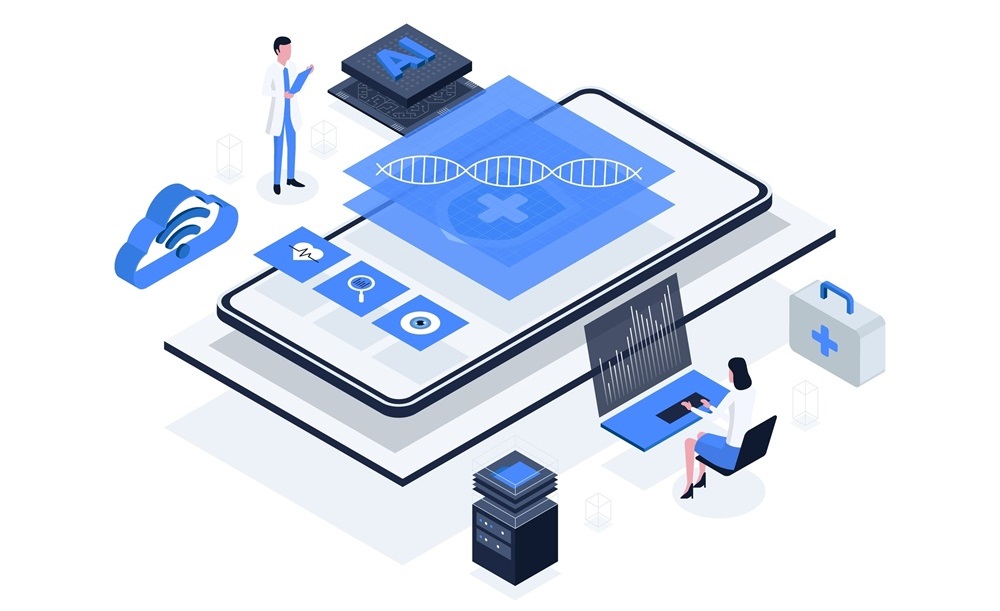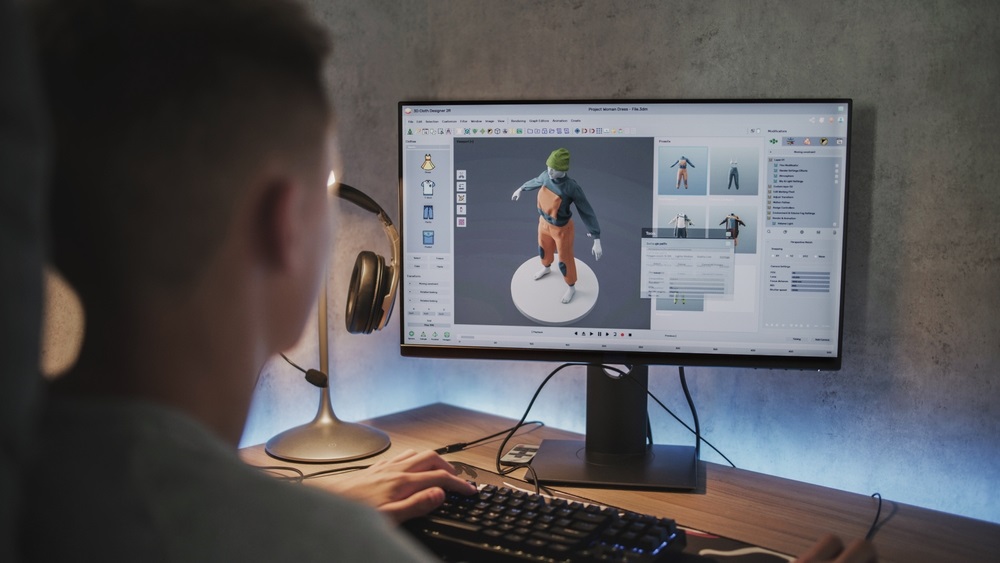Predictive modeling in healthcare holds a great deal of promise. It’s being integrated for facilities and providers in the medical sector, but it is yet to run its course.
To get a glimpse of its potential, imagine a system where doctors can predict and treat patients before their symptoms worsen or even appear.
Or imagine a plan where a hospital’s resources are smartly allocated without ever running into scarcities.
That’s the kind of ability predictive modeling in healthcare seeks to instill. And it is taking shape by empowering medical knowledge and expertise with statistical insights and the latest in technology!
Join us as we explore the possibilities set forth by predictive modeling and smart fitness technology. How it is being applied in various fields of the medical sector and the benefits that it provenly brings.
Let’s take a look at how the landscape of healthcare is changing as we speak.
Applications of Predictive Modeling in Healthcare
Precision and foresight in one’s tasks and operations are of paramount importance and healthcare isn’t one to shy away from them.
In fact, as healthcare evolves, so has the need for innovative medical processes and operations that have allowed care providers to become better by leaps and bounds.
Predictive modeling in healthcare is one such driving force behind this evolution and has proven to be quite effective at improving patient outcomes.
Here are some essential applications of predictive modeling in healthcare that is improving all the work done in this sector:
Detecting and Reducing Diseases
Often it has happened that patients develop diseases and illnesses of which they had shown signs and symptoms early in their lives.
These might depend on a range of factors and predictive modeling in healthcare is being used to identify and make predictions based on it.
Think of it like predictive maintenance, but on a smaller scale where a person’s medical history, their lifestyle and other data is fed into smart algorithms for analysis.
Based on the findings, the models are capable of detecting who is more at risk for a certain disease, such as of the heart or diabetes, among others.
Furthermore, by relying on predictive modeling, healthcare systems are also better equipped to catch diseases at an earlier stage than it would have normally would when surfaced.
This can prove to be useful for doctors to intervene and treat a patient on time, especially in high-risk diseases like cancer where early detection means a higher probability of surviving it.
Managing Resources and Readmissions
Hospital resources and materials used in medical facilities for various purposes, including the staff, can be better allocated with the inclusion of predictive modeling in healthcare.
That’s because with smart algorithms and data analysis, the models can oversee the resource management process and indicate which elements are at a risk of being overwhelmed or finishing.
It will lead to situations where there are more beds available for patients, staffing is adequate and all the basic amenities for medical processes are present as required.
In addition to that, this will bring down the readmission rate for patients as the model will also help doctors in recognizing and allocating resources for patients likely to get readmitted:
Contributing to an overall reduction on the stress encountered by the healthcare provider in managing and deploying their resources over time.
Adhering to Medicines and Clinical Support
For a lot of healthcare providers, one constant worry that sometimes affects patient outcomes and the quality of treatment is in ensuring that the patient adheres to taking the prescribed medicines.
And not just that, but also that they stick to the prescribed medication’s regimen and timing of the doses.
Predictive modeling in healthcare can be useful in recognizing how likely a patient will stick to their medicine dosages and regimen.
As per this data, medical professionals and even clinicians can take better decisions when prescribing medicines.
In order to ensure that the patient is more compliant and that they are more inclined to finish their medicine dosages as prescribed.
This will support medical facilities ranging from clinics to even major hospitals by recommending the correct medicines for being prescribed and all the other important details.
Managing Chronic Diseases
Chronic diseases and conditions are illnesses that people learn to live with, by easing and keeping the harmful symptoms at bay using specific medicines.
Some of the most common chronic diseases that healthcare providers deal with, include diabetes and hypertension.
Similar to how adherence to medicines can be enabled by predictive modeling for treatments, it can have the same level of impact for managing chronic diseases.
This is because in keeping the bad symptoms of the chronic disease at bay, patients might sometimes forget to take doses, or even hold off on doses for various reasons.
Plus, in certain cases, a patient’s body might slowly adjust or become resistant to certain drugs, requiring their doctors to tweak or swap out their medicines.
Predictive modeling in healthcare can remedy this by detecting when a patient’s health is likely to get worse, or if they are drug resistant, etc.
Personalized and Targeted Treatment
Over time, medical practitioners and researchers have realized and published journals over which population groups are more susceptible or vulnerable to certain diseases.
For major healthcare organizations, or even for public sector facilities, identifying diseases and their at-risk populations can be vital in improving patient outcomes.
Predictive modeling in healthcare can help identify and engineer treatment plans for these patient demographics, whether for private medicine or public health campaigns.
In that same vein, predictive modeling in healthcare can also enable medical facilities to formulate treatment plans for individuals or patients with a specific illness.
It can be customized for various patients, right down to the individual level where the characteristics and condition of the patient may play a role in their medical treatment.
This will in turn help providers in treating their patients effectively without worrying about side effects or drug resistance.
Reducing Frauds and Healthcare Costs
The healthcare system of any medical facility or even an organization can be introduced to all sorts of scams and fraudulent claims if there aren’t any strong preventive measures in place.
In these situations, predictive modeling can aid with detecting these frauds, by discerning between sincere and fraudulent insurance claims and bills, etc.
These models can also detect abnormal patterns in billing cycles and expense claims.
Reduction of frauds in combination with pricing estimates for medical practices can bring down healthcare costs or at least stem their losses.
Predictive modeling in healthcare will also enable medical facilities and providers to budget and plan their finances better, based on the influx of patients and other available data.
With lower fraud-related losses and accurate billing, these models will bring down costs in the healthcare sector.
Overall, these applications of predictive modeling in healthcare show just how versatile and important it can be for everyone in modern medicine. Kind of like implementing blockchain and AI in the medical field.
From helping patients achieve better outcomes through their treatments to managing healthcare systems on a broader scale, it checks many of the boxes for medical professionals, about what they could expect.
Benefits of Predictive Modeling in Healthcare
Most of what predictive modeling in healthcare entails boils down to using statistics and the latest machine-learning techniques.
That is, taking an approach that relies heavily on studying and quickly deploying what has been learned from large pools of data, and applying it to healthcare systems.
Think spatial intelligence, only more advanced. As more medical facilities and providers adopt these models and opportunities for AR fitness, let’s take a look at some of the benefits brought by predictive modeling in healthcare:
Quality Data Sets
Predictive modeling is dependent on extensive and excellent health care data. This information may be obtained from a variety of sources, including notably electronic health records (EHRs), reimbursement statistics, survey responses from patients, and wearable devices.
Patient demographics, health history, test findings, prescription consumption, and other information may also be included in the data.
Precise Training and Analysis
To guarantee accuracy and generalizability, models for prediction undergo training on prior information and afterwards evaluated. And in order to measure the effectiveness of predictive modeling in healthcare, one can divide the dataset into sets for testing and training, or use cross-validation approaches.
Customizable Features
In order to create predictive models, relevant characteristics or variables are chosen from healthcare data. These characteristics might include clinical measures, patient traits, and other elements that are thought to be related to the result of interest.
Once identified, they are used to make the model which will then be implemented in the relevant system for use.
Predicting Outcomes
Once trained and verified, the model may be used to forecast future healthcare occurrences or outcomes. A predictive model, for example, may be used to assess a patient's probability of acquiring a specific disease in the coming year.
This lets predictive modeling in healthcare benefit medical providers who can use this to reduce patient readmissions and a more thorough course of treatment.
Prioritizing Risks
Predictive modeling in healthcare also gives an advantage to medical facilities and organizations in that they can categorize patients into risk groups.
This is usually done based on their chance of suffering specific health events. This aids in the prioritization of care management initiatives for high-risk people.
And plays well into the plans of the healthcare provider who wants to manage their resources better for medical events and emergencies.
Enhancing Healthcare Quality
Now one of the key benefits, and also a bit on the nose for the whole matter is that predictive modeling may also be used to track healthcare quality and spot areas for improvement.
Organizations may improve the quality of care by examining the results for patients and healthcare procedures and making data-driven adjustments.
From supporting clinical workflows to equipping health providers with the tools and information that they need, predictive modeling in healthcare has a lot of benefits to offer in enhancing healthcare quality.
These are some of the important benefits of having predictive models involved in optimizing healthcare systems and channels of delivering medical care and services.
Similar to an AI and blockchain development company, it has successfully combined using data collection and analysis to leverage smart algorithms and machine learning.
And in doing so, it is creating solutions that will help the overall landscape of modern medicine.
Important Examples and Use Cases of Predictive Modeling in Healthcare
Predictive modeling in healthcare has a wide range of use cases that have already started taking root in the medical sector. Just like the instances where private blockchain in healthcare is also being adopted by businesses.
Hospitals, healthcare companies, and even digital tech organizations geared toward the medical world are utilizing these models.
It’s been of great use to healthcare providers and to the general public and is genuinely contributing towards improving the quality of life from a medical standpoint.
Now that we have learned about its applications and benefits, here are some important examples and use cases of predictive modeling in healthcare:
Preventing Readmissions
Predictive modeling in healthcare has proven to be one of the most important steps in this matter.
Where, by leveraging the data and information made available to medical experts, the model has reduced and prevented readmissions to hospitals for patients across different situations.
By almost 20% as per a study, and instead of requiring a patient to be readmitted, it has enabled other routes of providing healthcare such as online counselling and home visits.
One such example of an institute leveraging predictive modeling in healthcare for these reasons, is the John Hopkins Hospital and their medical facilities.
Located in Maryland, USA, it uses smart models to detect and identify patients who might be suffering from chronic diseases. And even at risk of serious issues such as strokes and heart disease.
Based on this data, they are then able to provide optimum healthcare services to these patients, which in turn reduces medical costs and keeps their resources free for other cases.
Improving Patient Safety
By identifying patients in danger for harmful occurrences, predictive models may be utilized to enhance patient safety. All of this data can be utilized to implement preventative steps, such as continually tracking patients or offering further guidance to them.
One research, for example, discovered that utilizing predictive modeling in healthcare for recognizing individuals who are susceptible to falling, cut the frequency of falls by half.
UnitedHealth Group is the name of a healthcare and insurance company based out of Minnesota, USA, which is using predictive modeling in healthcare to these effects.
They have special plans and coverage policies in place to help people manage their medical issues, but also, are presently using preventive models to identify early signs and symptoms of major diseases.
This could be diabetes, hypertension, or even something like cancer which is helping people opt for preventive care and reduce their chances of ever contracting that disease.
Personalized Treatments
A patient’s medical history, their lifestyle choices and daily preferences can be used by a physician to derive a lot about their medical conditions and also about their wellbeing.
Predictive modeling in healthcare, operates using this logic to sift through data collected about a patient to help assess or decode a patient’s condition.
Then, it allows the healthcare provider to devise a custom treatment plan for them, which will be good at fixing their medical issues while also adjusting to their habits and preferences.
It’s why in treatment for cancer patients, custom-made treatment plans have proven to be 15% more effective at improving patient outcomes.
Merative L.P., formally known as IBM Watson Health, is a healthcare technology organization that has been using predictive modeling in healthcare for such requirements.
Based out of Michigan, USA, it has been using predictive models to make structures and medical plans for patients that suits their medical history, choices and preferences.
They have used it for chronic conditions but most importantly for treating cancer patients. Where each customized treatment ensures the best of medical therapy and the least risk of developing side effects and problems.
Removing Fraud and Abuse
The medical industry and healthcare system as a whole, is not new to facing instances of fraud and abuse.
It can be the result of a light error on someone’s part, or likely engineered by either one of the participants involved in an institute’s medical processes and operations.
Predictive modeling in healthcare, for all purposes, is also being used to remove certain types of fraudulent activities seen in healthcare operations.
Such as using the model’s ability to see patterns in financial activities, detect what might be suspicious and block fraudulent incidents like being billed for services that weren’t even rendered!
In the same vein, Apixio and Blue Cross Blue Shield are the names of two healthcare and health technology companies that have been using predictive models for stopping fraud in healthcare.
They have successfully used software and programs that analyzes the data it receives from the model to detect problems in their systems. And successfully recovered $ millions in thwarting fraudulent claims.
Managing Grouped Healthcare
Doctors in their line of work often see patients sharing similar characteristics, developing the same kind of illnesses and diseases that also follow the same pattern.
This is not a new phenomenon and there have been research and journals published saying the same. And often, physicians have played the role of identifying certain parts of the populational demographic and groups.
In doing so, they have identified diseases that affect people based on specific characteristics and traits.
And used predictive modeling in healthcare to have them scanned, checked and begin treatment in case they actually do test positive or show symptoms for them.
Optum is another healthcare services provider based out of Minnesota, USA, who have started using predictive modeling in healthcare to improve the quality that they provide.
Of the patients they monitor or track, they use smart models to detect shared characteristics that indicates if they are susceptible to an illness. And also, which illness.
Based on what they find, they then either get them admitted or vice versa, and start treatment based on preventive measures.
Predictive Modeling in Medicine: The Future of Healthcare Practices
Having journeyed through some really innovative ways and applications of predictive modeling in healthcare, it is safe to say that modern medicine is witnessing a time of transformative growth.
Data science, artificial intelligence, and smart devices are pushing the envelope for healthcare expertise.
From helping patients through detecting diseases and risks at an early stage to allowing medical facilities to better manage and allocate their resources – the benefits are vast and vital for any healthcare company to grow.
At EDIIIE, we have been working to institute and pioneer new and important developments in the medical field. Whether be it through building smart AI models or harnessing the power of digital technologies such as blockchain and AR/VR in healthcare.
If you are ready to integrate the advantages of predictive modeling, blockchain, and other such options into your healthcare initiatives, then give us a call.
We would be delighted to get in touch and discuss how our tech and medical solutions can be a perfect match for your vision.








